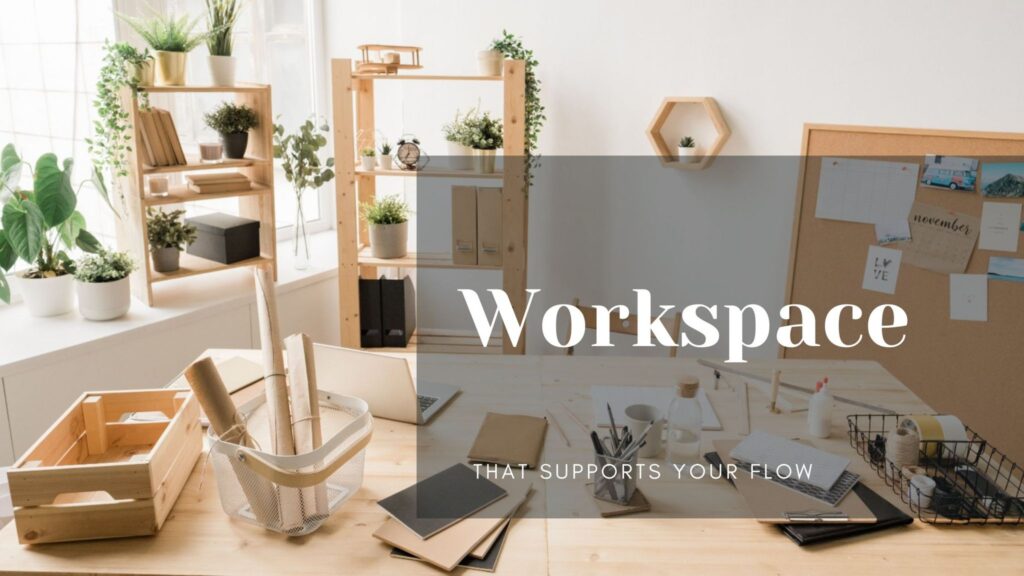Room Focus: A Workspace That Supports Your Flow

Workspaces ask a lot of us.
They carry our focus, our deadlines, our ideas – and often, the invisible weight of everything we’re trying to do at once. That’s why a well-designed home office isn’t just about efficiency. It’s about support.
When a workspace is calm, clear, and intentional, it stops pulling at your attention – and starts holding it. It becomes a place you return to, not just because you have to, but because something about it makes you feel ready.
What Supports the Work, Supports You
Start with how your body feels in the room. A good chair, the right height of your desk, the way your arms and shoulders rest – these aren’t luxuries. They’re alignment. When your setup fits you, work becomes more sustainable, and stress softens before it settles.
But support isn’t only physical. It’s visual, too.
When your desk surface isn’t overloaded, when your cables are tucked away, when the items you use daily are easy to reach but not in the way – suddenly the room feels lighter. You’re not managing the space. The space is managing you.
Let Light Become a Rhythm
Lighting isn’t just about brightness – it’s about rhythm.
Natural light in the morning. A soft desk lamp in the late afternoon. Overhead lights that don’t glare but glow. These layers help your energy shift gently throughout the day. Add a warm-toned bulb or a dimmer switch, and you begin to feel your way into work, not just switch it on.
Color can help too. Soft greens and muted blues hold calm and clarity. Warm neutrals reduce noise. Your walls don’t have to whisper, but they shouldn’t shout.
Meaning Has a Place Here, Too
Not everything on your shelf needs to be about work. In fact, it shouldn’t be.
A photo that brings you back to your why. A ceramic vessel that holds your pens and reminds you of a trip or a friend. A small plant that changes through the week, just a little. These touches aren’t distractions. They’re centering. They give shape to the silence.
And silence matters. Silence is where the work happens.
Space Within the Space
In many homes, the workspace is part of a larger room – or has to serve multiple roles. But even here, a bit of subtle zoning can make a difference.
A small corner chair becomes a reflection spot. A rug changes the energy beneath your feet. A shift in lighting marks the move from task to pause. These are small signals to your brain: now we focus. Now we rest. Now we return.
Final Thought: Work Doesn’t Need to Feel Like Work
At Reflected Spaces, I design workspaces that honor your energy. That know what you need before you sit down. That don’t push – but hold.
Because when a space listens, you work differently. You think more clearly. And your day begins to feel less like a sprint – and more like something you’re allowed to inhabit.

Anna
July 26, 2025